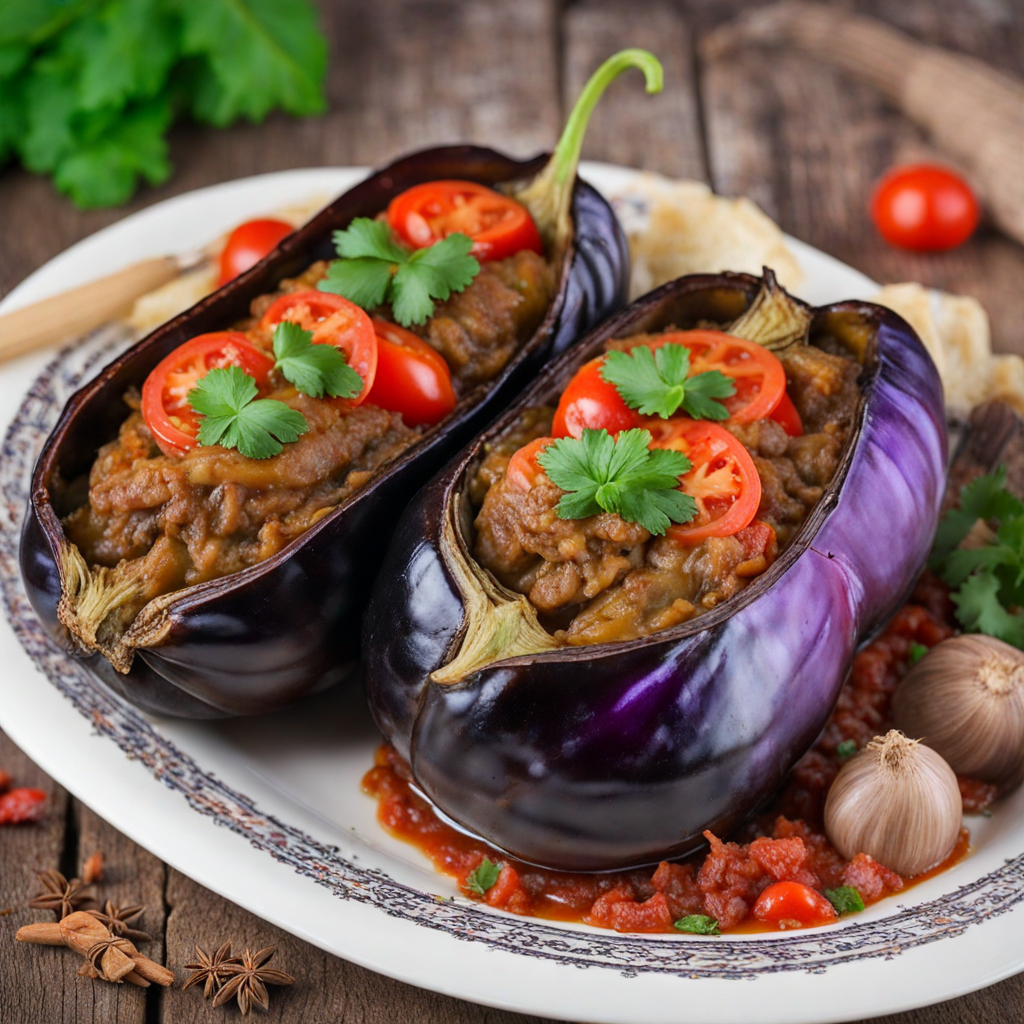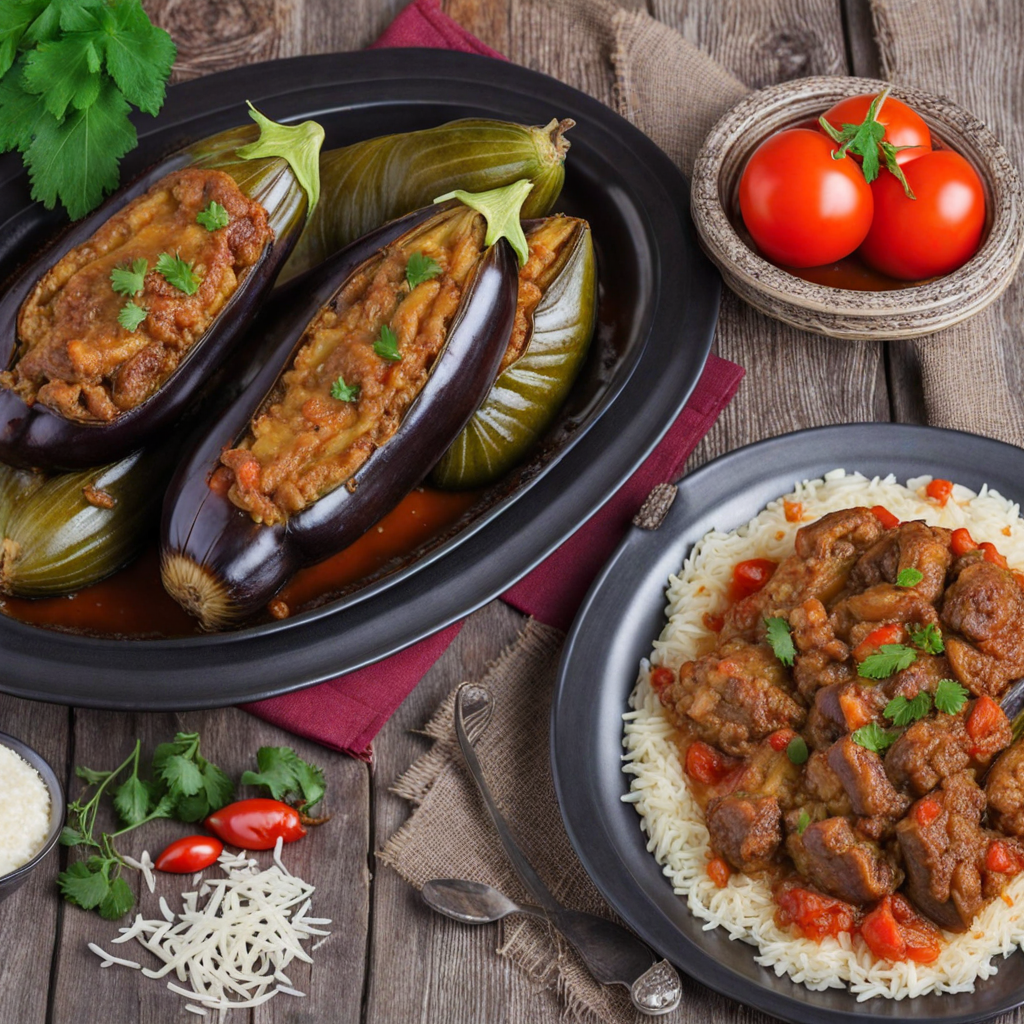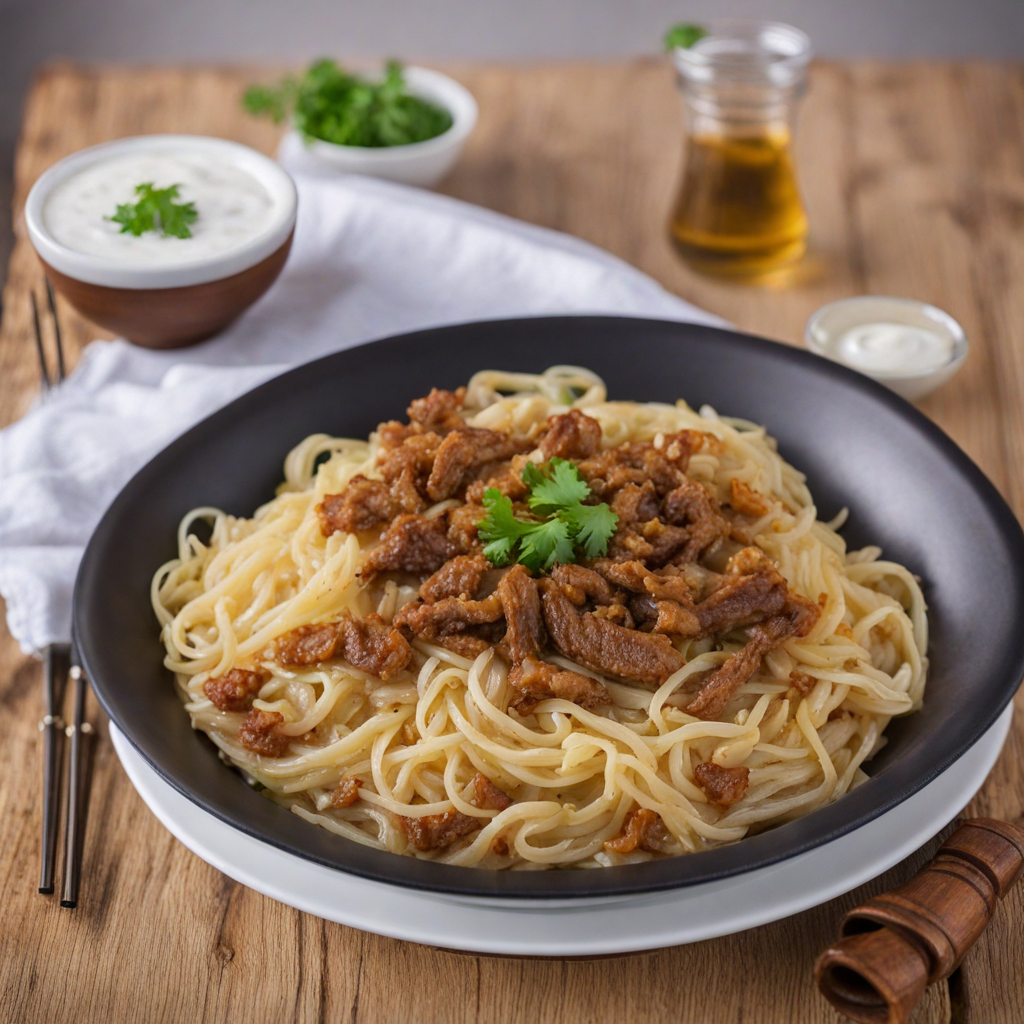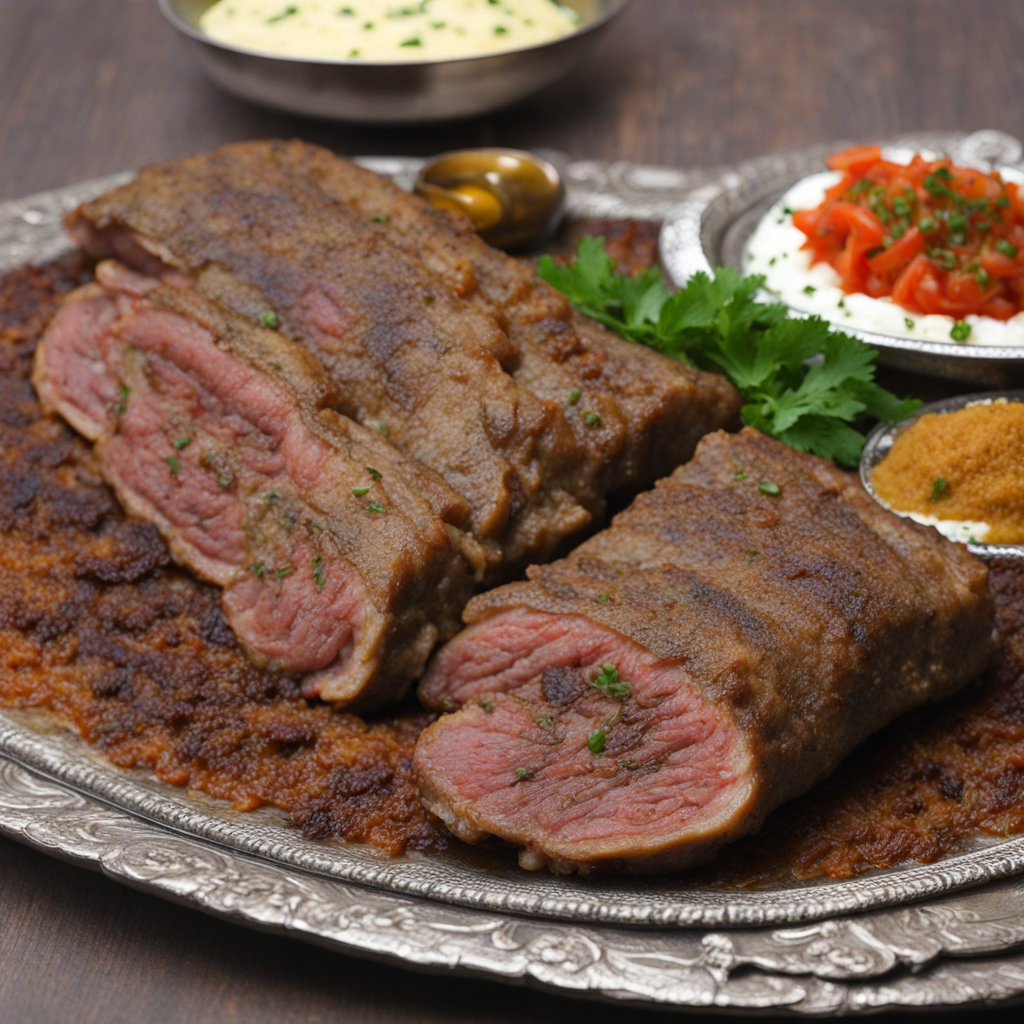Badimjan Dolma
Badimjan Dolma is a delightful Azerbaijani dish that showcases the rich culinary traditions of the region. The name itself translates to "stuffed eggplant," which is a key ingredient in this savory offering. The dish involves hollowing out tender, small eggplants and filling them with a mixture of minced meat—often lamb or beef—combined with aromatic spices, rice, and fresh herbs. The blend of flavors creates a harmonious balance, with the earthiness of the eggplant complementing the spiced meat filling perfectly. The use of fresh herbs like dill, parsley, and mint adds a vibrant freshness to each bite, making it a truly aromatic experience. Once the eggplants are stuffed, they are typically simmered in a rich tomato sauce, which further enhances their flavor. The sauce, often enriched with garlic and onions, bathes the dolmas in a tangy, slightly sweet essence that seeps into the eggplant, making it tender and succulent. The slow cooking process allows the flavors to meld beautifully, resulting in a dish that is both comforting and inviting. Each serving is often garnished with a drizzle of yogurt or a sprinkle of fresh herbs, adding a cool contrast to the warm, hearty filling. Badimjan Dolma is not just a feast for the palate; it is also visually appealing. The deep purple hues of the eggplants and the vibrant red of the sauce create an enticing presentation that is sure to impress. This dish is often enjoyed as part of a larger spread during family gatherings or festive occasions, reflecting the importance of communal dining in Azerbaijani culture. Whether served as a main course or a side dish, Badimjan Dolma offers a unique taste of Azerbaijan that invites adventurous eaters to explore its savory depths.
How It Became This Dish
The Enigmatic Journey of بادمجان دولما (Bademjan Dolma): A Culinary Delight from Azerbaijan #### Origins: A Culinary Tapestry The dish known as بادمجان دولما (Bademjan Dolma), or stuffed eggplant, has its roots deeply embedded in the rich tapestry of Azerbaijani cuisine, a cuisine that reflects the land's diverse geography, cultural exchanges, and historical narratives. The origins of dolma can be traced back to ancient times when the practice of stuffing vegetables was commonplace in various cultures across the Middle East and the Mediterranean. The term "dolma" itself is derived from the Turkish word "dolmak," which means "to be stuffed." Eggplants, or "bademjan" in Azerbaijani, are believed to have been cultivated in the region since at least the 5th century. They were introduced to the Caucasus through trade routes that connected the East and West. As a result, the eggplant became a staple ingredient, not only in Azerbaijan but throughout the broader region, including Iran, Turkey, and the Levant. The adaptability of eggplants to various climates and soils made them a favored choice for local farmers, allowing the vegetable to thrive and evolve in the Azerbaijani culinary landscape. #### Cultural Significance: A Symbol of Hospitality In Azerbaijani culture, food is much more than sustenance; it is a vital expression of hospitality and communal bonds. Preparing and sharing meals is an integral part of Azerbaijani social life, and Bademjan Dolma holds a special place in this tradition. The dish is often prepared for gatherings, family celebrations, and religious holidays, symbolizing abundance and generosity. Dolma is not just a dish but a culinary experience that fosters connections. The preparation often involves the whole family, with each member playing a role in the process, from selecting the freshest eggplants to stuffing them with a savory mixture of rice, minced meat, herbs, and spices. This collaborative effort transforms cooking into a communal event, reinforcing family ties and cultural heritage. The dish also reflects the broader themes of nature and seasonality. In Azerbaijan, dolma is often prepared during the harvest season when fresh vegetables are plentiful. It serves as a reminder of the cyclical relationship between the people and their land, celebrating the fruits of labor and the bounty of nature. #### Development Over Time: A Culinary Evolution As Azerbaijan experienced various cultural influences throughout its history, so too did Bademjan Dolma evolve. The Persian Empire’s extensive reach introduced new spices and cooking techniques that enriched the Azerbaijani culinary repertoire. The incorporation of aromatic herbs and spices, such as dill, coriander, and sumac, transformed the flavor profile of dolma, making it a beloved dish that resonates with the tastes of the region. During the Soviet era, food culture underwent significant changes, with an emphasis on standardization and mass production. Nevertheless, traditional recipes like Bademjan Dolma endured, often adapted to suit the availability of ingredients. In urban centers, the dish became accessible in restaurants and cafes, appealing to a broader audience while still retaining its home-cooked essence. Post-independence, there has been a resurgence of interest in traditional Azerbaijani cuisine, driven by a desire to reconnect with cultural roots. Chefs and home cooks alike have begun to revive age-old recipes, infusing them with contemporary twists while honoring their historical origins. This renaissance has elevated Bademjan Dolma, showcasing it not only as a cherished family recipe but also as a culinary emblem of national identity. #### Contemporary Interpretations: A Dish for All Seasons Today, Bademjan Dolma continues to be a beloved dish in Azerbaijan, often appearing at festive gatherings, family dinners, and cultural celebrations. While the traditional recipe remains widely celebrated, contemporary interpretations have emerged, reflecting changing tastes and dietary preferences. Vegetarian and vegan versions of dolma have gained popularity, allowing those who prefer to avoid meat to enjoy this iconic dish. In modern Azerbaijani cuisine, Bademjan Dolma can be found in various forms, from the classic stuffed eggplant to innovative presentations that incorporate international flavors. Chefs experiment with different grains, such as quinoa or bulgur, and diverse fillings, ranging from nuts to dried fruits, expanding the dish's appeal beyond its traditional confines. Moreover, the global culinary landscape has embraced Azerbaijan's rich heritage, leading to the dish's introduction in international culinary festivals and restaurants. Food enthusiasts from around the world now seek to experience the flavors of Azerbaijan, with Bademjan Dolma serving as a delicious entry point into the country’s gastronomic offerings. #### Conclusion: A Culinary Legacy As we reflect on the history of Bademjan Dolma, we uncover a narrative that transcends mere ingredients and recipes. It is a story of cultural exchange, resilience, and the enduring bonds of family and community. This stuffed eggplant dish is not just a culinary delight; it is a testament to Azerbaijan's rich heritage and the universal human experience of sharing food. In every bite of Bademjan Dolma lies the essence of Azerbaijani life—its landscapes, traditions, and the warmth of its people. As it continues to evolve, this dish stands as a bridge connecting the past with the present, inviting future generations to cherish and celebrate the flavors of their heritage. Whether served at a festive table or enjoyed in the quiet of home, Bademjan Dolma remains a beloved symbol of hospitality, reminding us of the power of food to nourish both body and soul.
You may like
Discover local flavors from Azerbaijan







